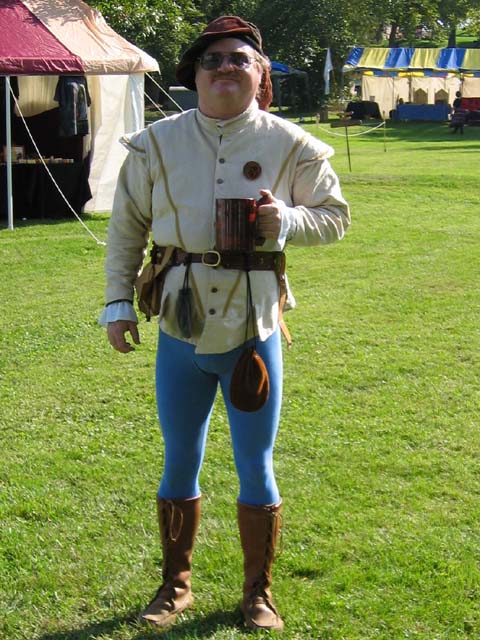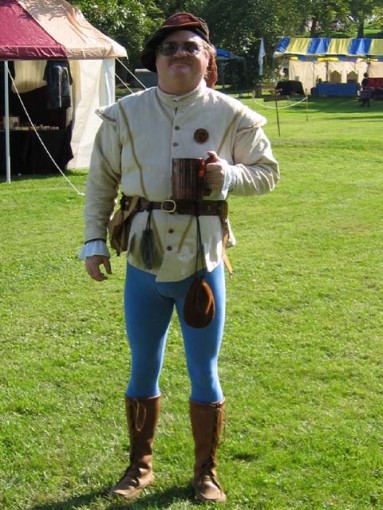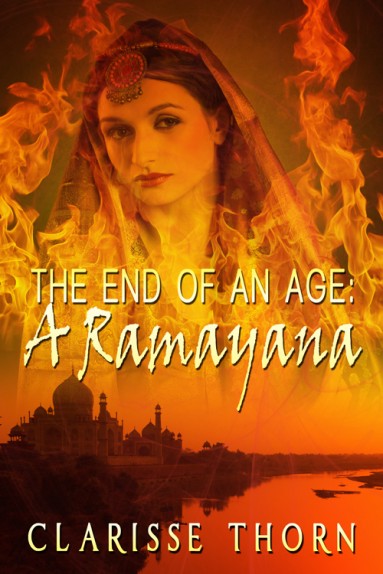What's going on in beauty this week, from head to toe and everything in between.
From Head...
Shades of gray: Turns out not as many people go gray as is commonly believed: One in 10 people over the age of 60 don't have gray hair, as reported in a study funded by...L'Oréal, which for once actually seems to legitimize the findings instead of casting doubt upon them. (Wouldn't L'Oréal want to report everyone turning silver at 60 on the dot?)
...To Toe...
Tights and YOU: Finally, someone answers all the questions you've wanted to ask about tights (but were afraid to ask). "Q: How do you make sense of the weirdo tights-sizing charts on the back of tights packaging? A: Just ignore them. The ones in your hands are probably the right size."
...And Everything In Between:
China mini-roundup: Aha! I've never understood why some American-produced goods are cheaper in overseas markets with low per capita income, while others cost just as much as they would in the States. This article sheds some light on why luxury goods benefit from keeping prices high even when the corporation could easily afford to slash prices (though the hook of the piece is that Estee Lauder recently did cut prices in China). Another piece calls into question the effectiveness of Osiao, the new Asia-specific brand from Estee Lauder—this really is untested waters, and it could go either way in China. The timing is particularly iffy, as the products are made in Japan, which is currently sparring with China over an archipelago of islands; strong branding has prevented sagging sales of Japanese-made products, but an entrant into the marketplace doesn't have that security. Plus, new research is revealing a psychological portrait of the emerging Chinese consumer, who tends to be younger, more brand-loyal, and more likely to make purchases based on emotions—which could go either way for Osiao.
Remember my name: A branding study shows that mass market cosmetics have stronger brand equity than high-end cosmetics. This seems surprising at first, given the way the power of the interlocking Cs of Chanel can induce sensible people to spend $45 on lipstick, but really, isn't brand equity just another way of saying "recognition"? And even if you're Miss Hoity Toity, you probably head into a drugstore at least as often as you head into Saks. (But the minute Saks starts carrying disposable razors...)
Color of sin: Revlon-owned nail polish line Sinful Colors is laying off more than 100 workers, expected to mostly come from the Maryland facility.
Eau de Pussy Riot: This interview with a mass-market Russian perfumer is unexpectedly charming ("Perfume isn’t something you buy every day. It’s not like bread or vodka")—and politically revealing. On the impossibility of a Pussy Riot perfume: "Don’t hold your breath. Support for the opposition is critically weak. You can’t base a brand round it. Maybe 10,000 people on a public square make a newspaper story—but those numbers just don’t stack up for us." (via Scented Salamander)
Hot mods: Beauty Redefined knocks it out of the park yet again, this time turning their critical view onto modesty. There can be power in modesty, but the "modest is hottest" mind-set puts the power exactly where we don't want it: back with the male gaze and its evaluation of women as objects. The piece is written from a nondenominational perspective, but it was interesting to read it through the lens of knowing the importance coauthor Lindsay Kite ascribes to her Mormon faith in regards to her work at Beauty Redefined.
"From the outside, my eating disorder looked a lot like vanity": Carrie Arnold, whose wonderful blog ED Bites continually updates and expands our understanding of eating disorders, has an essay in Slate that ideally would end the equation of "eating disorder" with "image-focused," though that's probably an optimistic hope, oui?
The fame of eating disorders: Finally, someone says something about the recent spate of celebrities revealing their eating disorders other than, "Lookee here!": Eating disorders are often linked to perfectionism, which is also often linked to the drive to succeed in one's given field. Like, say, journalism, or music, or fashion.
Love your selfie: Ann Friedman's piece on the power of the "selfie" (the digital self-portrait, à la Lady Gaga's simple yellow-bikini shot that has caused a media firestorm) is worth a read, though I'm not sure I agree with her main takeaway here—that the ability for us to see imperfect celebrity images has the potential to bring in a lesser level of self-critique. I think we're so used to equating women's bodies with sex that neither nudity nor poor lighting sends the subversive message this piece implies. That said, I do think there's potential here in the "selfie," for as Friedman writes: "The selfie says, I’m here alone. It says, Here’s how I want to present myself. This is why Gaga’s nudes are so powerful. They’re poorly lit; they’re self-staged. Not only is there no airbrushing, but there’s no flattering lighting, no strategic body positions. They underscore the message of her accompanying words. They say, Here’s me. Just me." (I also love Friedman's piece on why we should bring back the slip, not that I needed convincing, mind you.)
On in/visibility: The best thing I've read on the Lady Gaga "bulimia and anorexia since I was 15" picture comes from Crunk Feminist Collective. "We, as the social creatures we are, long to see and be seen. ... I am routinely pissed off about the way beauty is defined and described so as to exclude me, and so, so many others. And I certainly derive strength from that rage. But then, I also have to pause. I notice my discomfort begin in earnest whenever we have conversations about beauty and body image that do not include in intentional analysis of beauty as something that lives right at the intersection of race, age, ability, gender and sex. It’s not an expendable luxury here, to name these things. For women of color, the notion of embracing and seeking the upside of ugliness is a complicated task in the fight against invisibility on one hand and hyper-visibility on the other."
Take it from a pro: The professionalization of the beauty industry helps create safety and training standards, and it also serves to legitimize a profession that is often undermined. But as this beauty-school blogger writes, it can also lead to an overdose of TPV: The Professional View, aka riding roughshod over clients' actual experiences in favor of a professionalized view of what "should" work.
Move over, Willy Loman: Any readers in the Birmingham, UK, area want to check out the hilarious-sounding play Death of a Beauty Saleswoman and report back to me?
Beauty myth: Turns out feminist sex writer Clarisse Thorn has a hand in fiction in addition to her insightful, provocative nonfiction books and essays. The End Of An Age: A Ramayana tells the tale of exquisite beauty and its consequences, through clear-eyed prose in the style of the Sanskrit Ramayana, an epic tale of relationships and their duties. Check out the story now—it'll soon be behind a paywall, though it'll only be 99 cents to read once it's gated.
Two sides, same coin: You know those studies that talk about how facial symmetry signals evolutionary health? This collection of digitally symmetrized portraits—a combination of lovely, spooky, adorable, and just plain weird—makes me wonder about the truth of that claim. (via Monalisa)
Melissa the Great: "Breasts and females, there’s a subject we could talk about for a long, long time. How our place in the world and our sense of self is shaped by the size, shape, tone and texture of our breasts. Mine worked really good. They fed my infant." I love Melissa Leo. (Okay, really I've only seen her in a couple things so clearly what I mean is: I love Kay Howard. Homicide represent!)
Pitiless perfumes: Given that perfume ads, by their very nature, have to rely almost entirely on marketing, branding, and emotional connection in order to make their sales, it's a wonder nobody created Perfumes Without Pity—a Tumblr parodying (with love! sometimes!) perfume naming and branding techniques—before now.
The other limitation of the MPDG: I haven't seen New Girl, in part because I was resistant to the whole gee-ain't-Zooey-Deschanel-quirky thing—but if anyone could convince me to give it a whirl, it's Lili Loofbourow and her piece that gives a different take on the manic pixie punching bag. "[I]f you have a proclivity toward selectively seeing sameness and ignoring difference, you’re missing the stuff that makes characters and comedy great. ... Fixing this bad habit, this blindness to variety, requires that we, as an audience, be re-trained. New Girl more or less announces in the title that this is what it’s trying to do with the '____ Girl' trope. It’s insisting on the possibility of a new girl, and chooses for that 'new girl' one of the most typecast film actresses of our time. Not just typecast—archetypecast."
On silvered glass: How private Roman peepshows, conquistadors, and 4-H shaped the way we gaze at ourselves—loving Wild Beauty's social history of mirrors.
Getting highlights: Sally might have titled this post "Highlighting Your Face Without Earrings," but for the most part it also serves as a guide for how to highlight your face without makeup (quelle horreur, I know, but I understand not everyone loves the stuff—but that shouldn't mean you don't know a few strategic tips here and there regardless).


